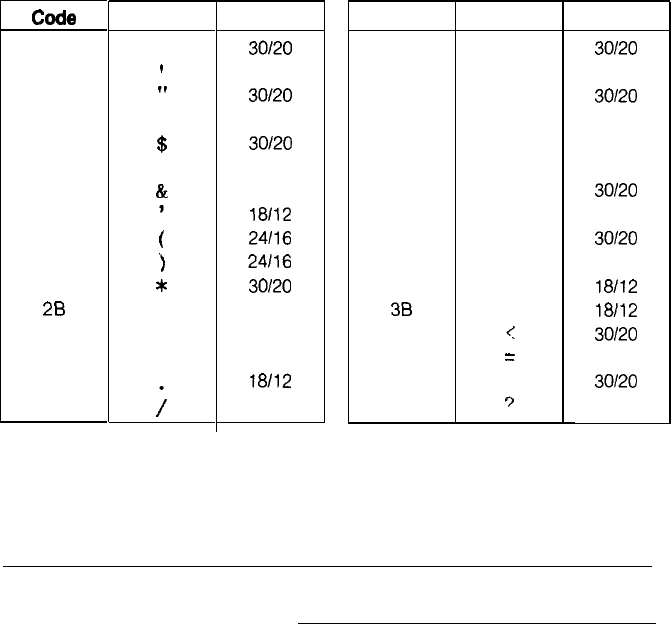Printer User Manual
Table Of Contents
- FRONT MATTER
- TABLE OF CONTENTS
- INTRODUCTION
- CHAP 1-SETTING UP THE PRINTER
- CHAP 2-PAPER HANDLING
- CHAP 3-USING THE PRINTER
- CHAP 4-USING SOFTWARE AND GRAPHICS
- Using the LQ-2550 With Application Programs
- Computer-Printer Communication
- Enhancing Your Printing
- Graphics
- User-Defined Characters
- Designing Your Characters
- Design Grids
- Data Numbers
- Sending Information to Your Printer
- Printing User-Defined Characters
- Copying ROM Characters to RAM
- Letter Quality Characters
- Proportional Mode Characters
- Superscripts and Subscripts
- The Graphics Command
- Column Reservation Numbers
- A simple Graphics Program
- Using Hand-Calculated Data to Print Graphics
- Using Software and Graphics
- Mixing Print Styles
- CHAP 5-MAINTENANCE AND TRANSPORTATION
- CHAP 6-TROUBLESHOOTING
- Troubleshooting
- Problems and Solutions
- The Printer Does Not Print
- The Printer Stops Printing
- The Printout is Spaced Incorrectly
- The Printout is Faint or Uneven
- The Printout is Not what You Expect
- Single Sheets Do Not Feed Properly
- Continuous Paper Does Not Feed Properly
- Cut Sheet Feeder Does Not Load Paper Correctly
- The Short Tear-Off Feature Does Not Work Properly
- Color Printing Is Not What You Expect
- Data Dump Mode
- CHAP 7-USING PRINTER OPTIONS
- CHAP 8-COMMAND SUMMARY
- APPENDIX A-TECHNICAL SPECIFICATIONS
- GLOSSARY
- INDEX

Proportional Width Table
This table lists the widths of your printer’s proportional characters. The
values given are in 360ths of an inch. For example, a value of 36 is
36/360ths of an inch. You may need to enter these widths into a special
table for your processing program so it can calculate the number of
proportional characters that will fit on a line.
The characters with no code indicated are international characters or
graphics. See the table in the section on international characters in
Chapter 3 for the relevant codes for the international characters. Also,
see the descriptions of the ESC R and ESC t commands in the Command
summary (Chapter 8) for information on how to use these characters.
The following width table shows each character, its ASCII code
(hexadecimal), and its width. If there are two numbers in the width
column, the second one is for the superscript/subscript version of the
character.
CO&
20
21
22
23
24
25
26
27
28
29
2A
28
2c
2D
2E
2F
CHR
I
I,
#
$
%
&
;
)
*
t
,
i
Width Code
30120
30
18112 31
30120
32
30120
33
30120
34
36124
35
36124
36
18112
37
24116
38
24116
39
30120
3A
30120
38
18112
3c
30120
3D
18112
3E
30120
3F
CHR
0
1
2
3
4
5
6
7
8
9
.
.
.
,
c
=
>
3
Width
30120
30120
30120
30120
30120
30120
30120
30120
30120
30120
18112
18112
30120
30120
30120
30120
B-2
Appendix B










